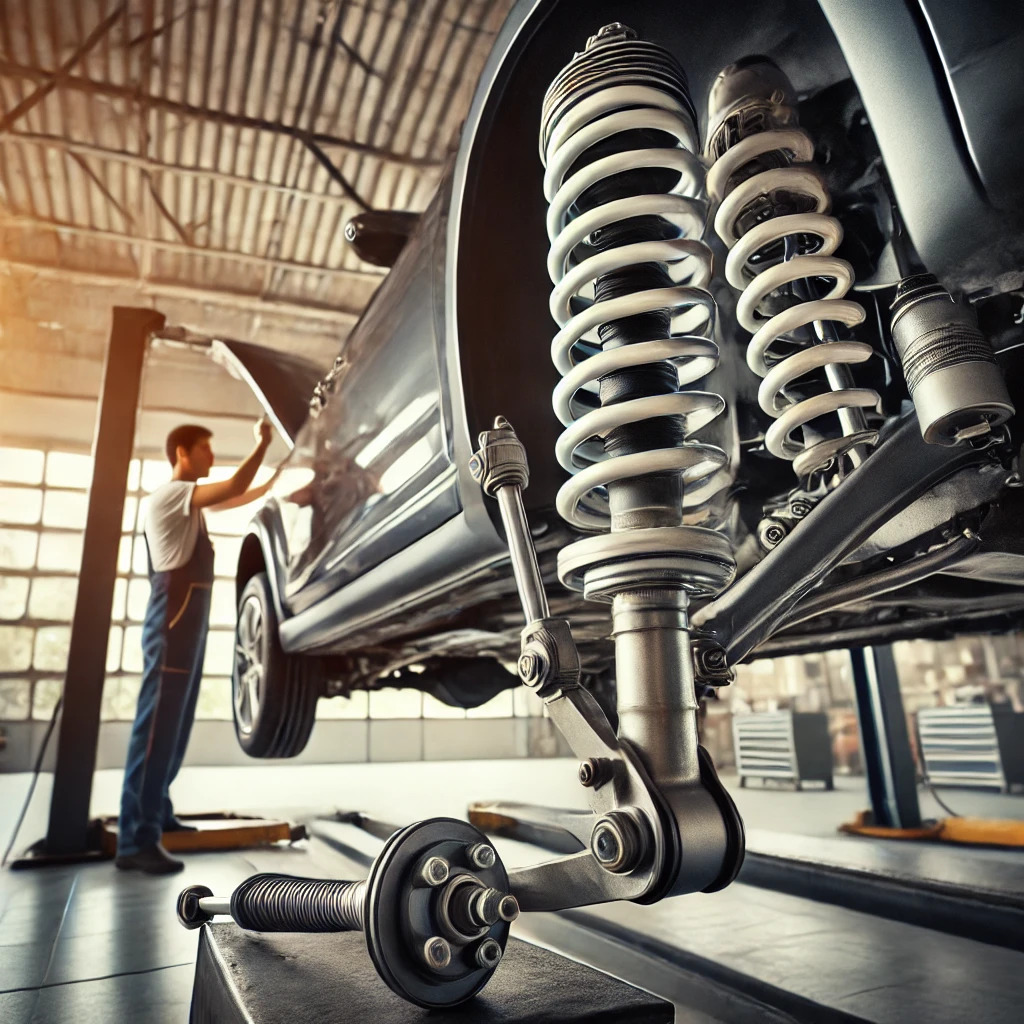When it comes to car maintenance, the suspension system often doesn’t get the attention it deserves. Many drivers focus on engine checks or oil changes, while suspension problems tend to go unnoticed—until something goes wrong. However, your car’s suspension is vital for more than just comfort; it directly impacts your safety, vehicle performance, and overall driving experience. Let’s explore why this often-overlooked component needs regular maintenance and how addressing issues early can save you from bigger headaches down the road.
What Does the Suspension System Do?
The suspension system is a network of components designed to ensure smooth driving, absorb shocks from uneven roads, and keep your car stable, particularly when navigating turns or bumps. Key parts include:
- Springs and Shock Absorbers: These elements work together to dampen the impact of bumps, maintaining tyre contact with the road for better control.
- Control Arms and Stabiliser Bars: These keep your car’s wheels aligned and ensure the vehicle stays stable during cornering or abrupt manoeuvres.
Why Suspension Matters for Safety
One of the most crucial roles of the suspension system is maintaining road grip, which is essential for safe driving. Worn-out shocks or struts can increase stopping distances, especially on wet or uneven surfaces. Research indicates that vehicles with 50% worn shocks require up to 2.6 metres more to come to a complete stop from 50 mph, which could be the difference between avoiding a collision and causing one.
A faulty suspension also compromises your vehicle’s ability to handle turns, as worn parts lead to excessive body roll and reduce your control. For example, cornering at even moderate speeds becomes riskier as the vehicle leans excessively, making it harder to maintain a stable trajectory.
Signs Your Suspension Needs Attention
You don’t need to be a mechanic to notice when your suspension needs work. Common signs include:
- Uneven Tyre Wear: If you notice one tyre wearing down faster than the others, it could be due to suspension misalignment.
- Excessive Bouncing: Does your car continue to bounce after hitting a bump? This is a classic indicator that your shocks or struts are worn out.
- Steering Issues: If the car drifts or pulls to one side, especially on straight roads, it’s likely that your suspension needs adjusting.
- Unusual Noises: Clunking or squeaking sounds over bumps may point to worn or broken suspension parts like control arms or bushings.
These issues not only make your car uncomfortable to drive, but they can also lead to more serious consequences like uneven braking and poor handling.
Consequences of Ignoring Suspension Problems
Neglecting suspension maintenance doesn’t just affect comfort – it can lead to costly repairs and increased safety risks. A damaged suspension will unevenly distribute the car’s weight, putting additional stress on the steering system, tyres, and brakes. Over time, this leads to accelerated wear and tear on these parts. For instance, misaligned wheels or worn shocks can cause tyres to wear unevenly, shortening their lifespan and costing you more in replacements.
Moreover, a compromised suspension makes it harder to handle emergencies. In sudden braking situations, worn suspension components can cause your vehicle to nosedive, reducing your ability to stop in time.
How to Maintain Your Suspension System
Routine maintenance is essential to keep your suspension in top shape. Here’s what you can do to ensure it performs optimally:
- Regular Inspections: Have your suspension inspected at least once a year or every 12,000 miles. A professional mechanic can check for wear and tear, such as leaks in shock absorbers or sagging springs.
- Wheel Alignment and Balancing: Proper alignment is crucial to prevent uneven tyre wear and ensure your car handles smoothly. It’s also a good idea to balance and rotate your tyres regularly to prolong their lifespan and reduce strain on the suspension system.
- Replace Worn Parts Promptly: If you notice signs of wear, such as bouncing or excessive body roll, don’t wait to replace the affected components. Early action will prevent further damage and keep repair costs down.
- Avoid Overloading: Carrying excessive weight can strain the suspension, leading to premature wear. Check your vehicle’s load limits and avoid overloading it.
- Tyre Maintenance: Maintaining the correct tyre pressure also plays a role in how well your suspension performs. Under-inflated tyres add stress to the suspension components, increasing the risk of premature failure.
The Long-Term Benefits of Suspension Maintenance
Taking care of your car’s suspension isn’t just about avoiding uncomfortable rides. A well-maintained system can save you money in the long run by preventing damage to other components like tyres, steering parts, and even the drivetrain. Regular maintenance also improves fuel efficiency, as a stable, properly aligned vehicle requires less energy to drive smoothly.
Beyond the financial benefits, there’s a significant safety upside. A responsive, well-tuned suspension gives you better control over your vehicle, reducing the risk of accidents, especially in challenging driving conditions.
Conclusion: Don’t Overlook Your Suspension
Your car’s suspension system works hard in the background, ensuring you enjoy a smooth, safe ride. However, when ignored, it can become a major source of safety hazards and costly repairs. Regular inspections, proper maintenance, and prompt repairs will keep your suspension in top form, allowing you to drive with confidence and peace of mind.
If you’ve noticed any of the signs mentioned or suspect your suspension needs attention, don’t wait. Visit Windmill Garage for a comprehensive suspension check, and keep your vehicle safe, comfortable, and road-ready for years to come.

